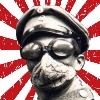- Spazmelda
- Key Master
 Offline
Offline 
- From: Ohio
- Registered: 25-2-2015
- Posts: 830
Backing sheets
We had a discussion here a while back about backing sheets. I came across a listing on ebay for Allied Backing sheet, and I went ahead and ordered it to see what it was like. Unfortunately it was a bit too thick to use easily. However, it did give me an idea. The backing sheet was made of thick plastic, perhaps mylar, and was 0.01" thick (10 mil). I ordered a couple of other thicknesses of mylar that are used for cutting stencils for various uses (airbrush artwork, etc...). I ordered 4 mil, 7 mil, and 5 mil.
The 4 mil is a bit too thin. It rolls into machines easily, but doesn't significantly improve the type impressions. The 7 mil is a bit thick. It definitely helps improve the type impressions, but can cause the paper to stick up a bit and not be held down perfectly with the paper bails. For machines with paper fingers, it does not work well at all, as the paper fingers are not able to hold the paper down flat to the platen. The 5 mil is just about perfect, IMO. It is thick enough to improve type impressions, but flexible enough so that the paper doesn't poke up to stiffly.
Also, all the different thicknesses seem to be very durable. I have run them through for several multipage letters so far, and they do not show any signs of being dented or torn up from the type striking them.
If you happen to try this out, please let me know how it goes for you!
This is the mylar I got, and it has the added benefit of being frosted on one side, slick on the other, and already cut to letter size (some of the others I had to cut down to size).
- Spazmelda
- Key Master
 Offline
Offline 
- From: Ohio
- Registered: 25-2-2015
- Posts: 830
Re: Backing sheets
Here is a picture of the Allied backing sheet I acquired from ebay.
- •
- Uwe
- Moderator
 Offline
Offline 
- From: Toronto, Canada
- Registered: 12-3-2013
- Posts: 4,410
Re: Backing sheets
Interesting that this came up today.
I do my best to use a backing sheet, but still often forget. I suppose that's because the practice wasn't driven home when I learned to type. In my case a backing sheet is just a heavier sheet of paper than the one I'm typing on, and it seems to work well without suffering much wear.
I pulled out an Erika Model 100 for today, and proudly remembered my backing sheet, but was surprised that the machine resisted taking in the two sheets of paper at the same time (it works fine with just one sheet). I'm sure there's a mechanical reason for this, perhaps an issue with the feed rollers, but now that I do have both pages in they're causing havoc with the line spacing.
I'm mentioning this because the quality of a platen's rubber can vary greatly from machine to machine, and I wonder how plastic (and polyester films such as Mylar), which I've never tried, fares when compared to paper when used with harder rollers that offer less grip?
The impressive list of benefits on that Allied backing sheet make me want to run out and buy a skid of the stuff...
The pronoun I has always been capitalized in the English language for more than 700 years.
- Spazmelda
- Key Master
 Offline
Offline 
- From: Ohio
- Registered: 25-2-2015
- Posts: 830
Re: Backing sheets
The allied backing sheet is very stiff. Maybe that is due to age? I have no idea when it was made or what 'era' of typewriter it would have been used with. I'm thinking 50s based on the styling of it, but that may be totally off base. I should try to research.
- •
- Uwe
- Moderator
 Offline
Offline 
- From: Toronto, Canada
- Registered: 12-3-2013
- Posts: 4,410
Re: Backing sheets
The line scale on it is very interesting. I wonder how it was supposed to have been used? Can you see it through a sheet of paper? Even if you can, you wouldn't be able to through two sheets and a carbon. Great find, and I hope you discover more information about it
The pronoun I has always been capitalized in the English language for more than 700 years.
- Spazmelda
- Key Master
 Offline
Offline 
- From: Ohio
- Registered: 25-2-2015
- Posts: 830
Re: Backing sheets
I'm not having much luck finding any specific information about it.
I did find this patent that addresses what you were discussing above, by having a backing sheet as a folder. From what I can tell, you put the typing sheet in between the two sections of the folder, and the front piece would have a window for typing, with marks surrounding it for reference. There is also supposed to be some sort of audible indicator, but I haven't looked at how that works yet.
- •
- Spazmelda
- Key Master
 Offline
Offline 
- From: Ohio
- Registered: 25-2-2015
- Posts: 830
Re: Backing sheets
Spazmelda wrote:
I'm not having much luck finding any specific information about it.
I did find this patent that addresses what you were discussing above, by having a backing sheet as a folder. From what I can tell, you put the typing sheet in between the two sections of the folder, and the front piece would have a window for typing, with marks surrounding it for reference. There is also supposed to be some sort of audible indicator, but I haven't looked at how that works yet.
No, actually I don't think I have that quite right. I can't figure out exactly how it is supposed to work. Some parts that fold out and provide a scale...
- •
- Uwe
- Moderator
 Offline
Offline 
- From: Toronto, Canada
- Registered: 12-3-2013
- Posts: 4,410
Re: Backing sheets
What are the dimensions of the Allied backing sheet? Maybe a letter-sized sheet of paper fits between the scales and allows a typist to see them?
As for that other product with the "audible sounding device", no wonder it wasn't very popular (see below). You can do the same thing - without sound, mind you - with the paper rest on an Olympia SG1 (it will actually stop the page once you reach the line you want).
The audible warning device operates as follows: The typist snaps setting device into hole(s) on the scaled margin portion where she desires to be warned during her typing, and inserts the backing sheet with the typing sheet(s) into her typewriter in the usual manner. The sounding device is clamped on the paper lock bar (paper bail) so that the lever arm slides down the scaled margin portion, the lower edge of said lever arm being at all times in line with the writing line scale of the typewriter. When during the typing the typist at the end of every line pulls the line space lever a setting device preset in a setting hole in margin portion is pulled line space by line space nearer to the lever arm. Finally setting device slips under the lower edge of lever arm pivoting said lever arm suddenly upon the hinge thereby causing spring to swing sphere against the bell to sound the audible alarm which, preferably, should be different from that of the line end bell. In order to produce a two-tone alarm setting device may at its highest point have a deep groove all across in such a way as to make it into a two-obstacle device for the lever arm to pass.
The pronoun I has always been capitalized in the English language for more than 700 years.
- Spazmelda
- Key Master
 Offline
Offline 
- From: Ohio
- Registered: 25-2-2015
- Posts: 830
Re: Backing sheets
Yes, it is a little bigger that letter size. It is big enough that the scale markings show under a piece of letter size paper, but the numbers don't show. It is also a little bit longer, maybe so it can be fed in a little ahead of the paper?
- •
- beak
- Key Master
 Offline
Offline 
- From: Qld Australia
- Registered: 24-3-2013
- Posts: 929
Re: Backing sheets
What an interesting idea.
I was completely floored by your thickness measurements though.
0.01" = 10 mil (10mm?)
Should that be (25.4 x 0.01 =) 0.254mm? - which is equivalent to two or three sheets of ordinary copy paper.
Sincerely,
beak.

 1
1 